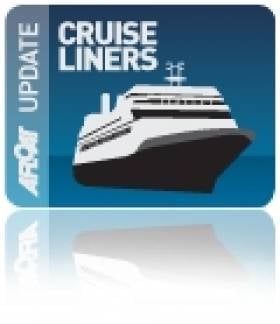Displaying items by tag: Skywalker Nightclub
‘Lost Weight’ Cruiseship to Call to Dublin Port
#CRUISE LINERS – Following Friday's first cruise call to Dublin Port this year of the 300-plus passenger Arion as previously reported, the considerably larger Grand Princess is to call on Wednesday. Notably on this occasion the 2,600 passenger cruiseship is to appear without her signature 'Skywalker' Nightclub, which used to be perched 18 decks-high at the aft of the vessel, writes Jehan Ashmore.
The aptly named nightclub was built on two legs to form a bridge (see PHOTO) and was accessed by a glass gangway. Not only was the structure at such an elevated position but it also overhang beyond the sheer of the stern superstructure below, where clubbers had bird's eye views over the oceans and to numerous ports of calls.
In an operation to remove the Skywalker last year, the structure weighing 211 tons took over 10 hours to complete (as previously reported including VIDEO of the work). The reason for removing the nightclub according to her owners Princess Cruises was to 'significantly improve the operational performance of the ship, including greater fuel efficiency.' For a post dry-docking view click PHOTO.
During the procedure at the Grand Bahama Shipyard in the US, the opportunity included the installation of a new nightclub three decks below and was named One5.
Ironically before the vessel lost weight!....she was the first cruiseship to visit Dublin Port to surpass the 100,000 tonnes milestone, when the leadship of the 'Grand' class docked in 2004.
Cobh Cruiseships Come and Go (Footage)
On Friday the Port of Cork welcomes another large cruiseship in the form of the Emerald Princess which carries 3,592 passengers, nearly 500 more than the Celebrity Eclipse. The 113,000 tonnes vessel is nearly 950-feet long, is 118 wide and draws 28 feet under the waterline. With 19 decks the vessel towers above the oceans and will also do so when alongside Cobh's 350m deepwater berth.
One of the numerous amenities onboard is the CyberGolf link and jogging track which are located high up near the stern. Directly situated below is the Skywalkers Nightclub and for movie-goers, films are shown at an oudoor theatre. The top of the range cabins are the 900 balcony staterooms which offer first class hotel style 24-hour room service.































































